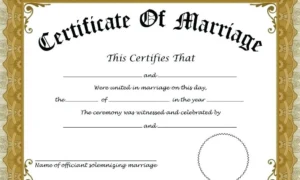Export goods from UAE can be a lucrative venture, but it comes with a set of responsibilities, particularly in terms of documentation. This comprehensive guide serves as an export documentation checklist to ensure a seamless and compliant export process for businesses in the UAE.
- Export License and Permits:
- Begin by securing the necessary export license and permits. Different goods may require specific authorizations, so it’s crucial to identify and obtain the appropriate documentation from relevant authorities.
- Market Research and Product Compliance:
- Conduct thorough market research to understand the compliance requirements of the target country. Ensure your goods meet the standards and regulations of the destination market.
- Incoterms for Clear Terms of Sale:
- Choose the appropriate Incoterms to define the responsibilities, costs, and risk allocation between the exporter and the buyer. This sets clear expectations for the entire export transaction.
- Detailed Export Invoice:
- Prepare a detailed export invoice that includes information on the goods, their quantity, value, and currency. This document serves as a basis for customs valuation and is crucial for customs clearance.
- Packing List for Organized Shipments:
- Provide a comprehensive packing list detailing the contents of each package, including weight, dimensions, and packaging type. This aids in efficient cargo handling and customs inspection.
- Certificate of Origin:
- Obtain a Certificate of Origin to certify the origin of the goods. This document is essential for availing preferential trade agreements and ensuring compliance with destination country regulations.
- Harmonized System (HS) Code Classification:
- Accurately classify your goods using the Harmonized System codes. This classification determines customs duties and helps customs authorities understand the nature of the exported items.
- Customs Declaration and Clearance Documents:
- Complete and submit the customs declaration form, providing accurate information about the exported goods. Ensure you have all necessary clearance documents for a smooth customs process.
- Advanced Cargo Information (ACI):
- Submit advanced cargo information to customs authorities, detailing the shipment’s contents, origin, and other relevant details. ACI facilitates pre-screening and expedites customs clearance.
- Insurance Documents for Risk Mitigation:
- Insure your goods during transportation and include insurance documents in your export documentation. This helps mitigate the financial risk associated with potential loss or damage.
- Bank Documents: Letters of Credit and Payment Guarantees:
- If applicable, include bank documents such as letters of credit or payment guarantees. These financial instruments secure payment and provide assurance to both the exporter and the buyer.
- End-User Certificate for Certain Goods:
- Depending on the nature of the goods, secure an End-User Certificate to confirm that the exported items will be used for their intended purposes and won’t be diverted for unauthorized use.
Successfully Export goods from UAE requires meticulous attention to detail and compliance with international trade regulations. By following this export documentation checklist, businesses can navigate the complexities of the export process with confidence. Regularly updating your knowledge of export regulations and staying informed about any changes will contribute to a successful and smooth exportation process. Remember, precision and adherence to regulations are paramount when dealing with exports from the UAE. With this checklist, businesses can streamline their documentation processes and embark on a journey to global markets with confidence.








































